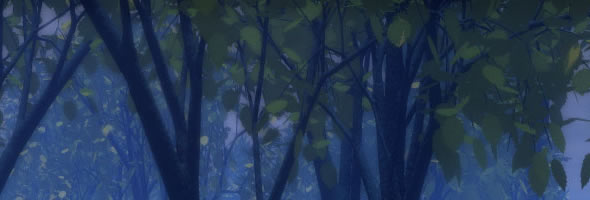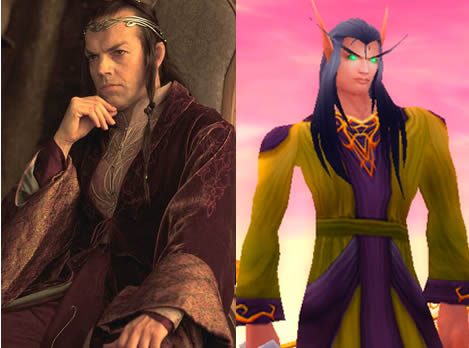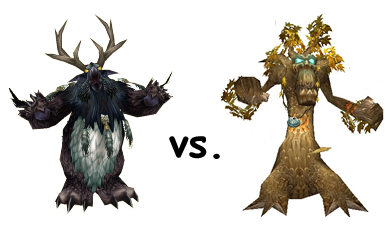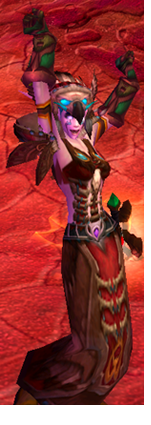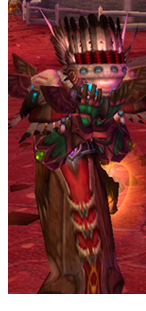So, why is it that World of Warcraft players love elves so much? What is the mysterious attraction of these slender, blank-eyed character models? Whether we’re playing the characters ourselves, or just watching level one Night Elf chicks dance naked on the mailbox, World of Warcraft players seem extraordinarily little resistance to the charms of pointy-eared humanoids.
This post is the first in a series of features on the different playable races of World of Warcraft. In each post, I speculate about why we make the choices we make, and what social meanings our preferences might have. After all, I’m not the first to suggest that our actions in the virtual world reflect our real-life identities.
The Elves of Warcraft
Elven-folk in the World of Warcraft divide into two playable categories, Night Elves and Blood Elves. Even though their artistic style and character models differ somewhat, I find it most convenient to talk about them together. In the end of the article, I will speculate about the reasoning behind the difference in look, but first I’d like to talk about elves–and their magical appeal–more generally.
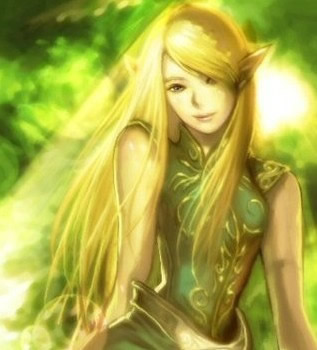
Elves in folklore
The elves, like many other stock personae of folklore, vary greatly from culture to culture. Generally of northern and western European extraction, the elves of folklore can be very small or human-sized, good or evil, ugly or beautiful. Elves are, at times, indistinguishable from fairies or other strange, supernatural creatures. All tales of elves have a common thread–their difference from humans. While they to some degree look and act human, and can even interbreed with them, elves have a different psychological makeup, different capabilities, and different values. To the ordinary human being, elves are all but unfathomable.
The debt to Tolkien
Most players of World of Warcraft could probably tell you that elves in-game descend more or less directly from J.R.R Tolkien’s elves. The elves of Middle-Earth are beautiful, powerful, benevolent beings, who despite their wisdom and good intentions, never seem to fully engage in the actions of the plot. The elves of Middle Earth–as both the book and the film poignantly depict–progressively abandon the continent in the midst of the conflict over the ring. As a first-time Tolkien reader, at age 16 or so, I was fascinated by Elrond, Galadriel, and Arwen. The sense of melancholy, of loss that haunts the elves is rather poignant, especially to the overly emotional teenage mind. However, ten years later, re-reading the novels makes me want to shake the elves for being so passive.
I think Peter Jackson must have agreed with me. In his film, the elves are much more involved in the conflict. My favorite moment in the films departs entirely from the books–Galadriel sends a company of elves to help defend Helm’s Deep. Tolkien’s Galadriel never would have done so, because Tolkien’s elves are always constrained by tradition and practice. An elf-queen would never have done anything out of the ordinary. With a few exceptions, Tolkien’s elves simply lack the passions that would drive them to action. These exceptions almost certainly include tragic princesses Luthien and Arwen. However, I will say that I’ve never found Arwen a compelling character–in fact, as a longtime reader (and Eowyn fan), I find her love for Aragorn to be rather shallow. She and Aragorn allow themselves to be caught up in the imitation of legendary figures–Luthien and Beren–and in my mind, their love affair is more about copying their ancestor’s actions than following their own desires. In short, Tolkien’s elves experience emotion differently than human beings. Nostalgia and melancholy permeate their personalities, but their passivity constantly frustrates the (human) readers.
Elves in contemporary fantasy
Of course, the developers of World of Warcraft weren’t necessarily reading Tolkien directly–or at least, not just Tolkien. I am a fairly avid consumer of fantasy novels, and elves, while infrequent, do appear from time to time. Most authors consciously imitate or parody Tolkien–such is the appeal of the master. On my elf reading list are Susanna Clarke’s Jonathan Strange and Mr. Norrell, Terry Pratchett’s Lords and Ladies, and relatively unknown Australian author Cecilia Dart-Thorton’s The Ill-Made Mute. The common thread of all of these works? To quote Pratchett: “Elves are bad.” I love the contrast with Tolkien, achieved in all of these cases through a return to folklore.
Back to Warcraft–Night Elves
What can literature teach us about video game elves, you ask? Plenty. Elves in WoW, most particularly the Night Elves, borrow liberally from Tolkien. Most of the Night Elf art was probably created before Peter Jackson’s film trilogy The Lord of the Rings was released, and it represents an independent rendering of some of Tolkien’s motifs. Darnassus might be one design team’s version of Lothlorien–the Night Elf city has a ruined, decadent feel, and it denizens live and work in buildings carved from enormous trees. Moreover, their spiritual leader is Tyrande, a distant, odd priestess. However, some of the Night Elf mannerisms indicate that the elves of WoW take themselves a little less seriously than Elrond and Galadriel do. Have you seen Night Elf women bouncing, and Night Elf men shrugging their overly-developed shoulders? Don’t even get me started on the dances–but seriously, do you think Arwen would have the moves to work in a strip club? Moreover, WoW has done a skillful job of blending the European elf with elements of Asian culture. The Lunar festival and the vaguely Japanese style of some of the buildings in Darnassus are my favorite aspects of Night Elf life. They bring something unique to the otherwise stylized image of the elf.
Blood Elves
Blood Elves to me do not seem to be a distinct culture of their own, but rather a version of the Night Elves adapted to Peter Jackson’s vision. Their models are the most beautiful in the game, but I miss the strangeness of the green-and-purple Night Elves. In addition, Blood Elves are really, really white. It’s hard to find any non-European references in their culture. Rather, most people compare Silvermoon City to Disney World. However, that doesn’t mean that I don’t appreciate the art–I envy the beauty of all of the blood elf mobs even as I destroy them.
Why Play an Elf?
Elves are extraordinarily popular player races, particularly among female gamers. To me, their appeal goes beyond their beauty. Elves are everything that gamers are not. Their appeal is the pull of the strange, the unknown, and the unfathomable. Who knows what emotions lie hidden behind their blank, glowing eyes? Elves are friends of wild things, at home with nature. Gamers, on the other hand, have what Tolkien would call minds of metal–we are civilized folk, city-dwellers who are dependent on technology for our fun. In addition, elves are placid, even passive, and they measure time in centuries. For gamers, passions run high (hence all the drama!), and the constantly-shifting game environment seems to compress time itself. Elves are solitary–they can wander the woods and wilds, the forgotten places of the earth, for centuries at a time. Gamers, on the other hand, are forced into alliances of either friendship or convenience–in the competitive world of the MMO, it’s almost impossible to achieve much on your own. Elves are scholarly–they have the span of many human lifetimes in which to read, write poetry, play music, and learn impossibly sad ballads by heart. Gamers, on the other hand, rarely have time between work or school and their online hobby to read a magazine every week.
The basic principle here is that we all want what we cannot have, and we all want to be what we are not. Maybe what we desire, truly, is not to be a supernatural being, but to imitate them–to be closer to nature, to read more, or to simply be more calm. So, the next time you /pant at a player named Leafspindle, Moondancer, or even HotBludElfChik, take a moment to think about all the things you might be missing in your own life.
